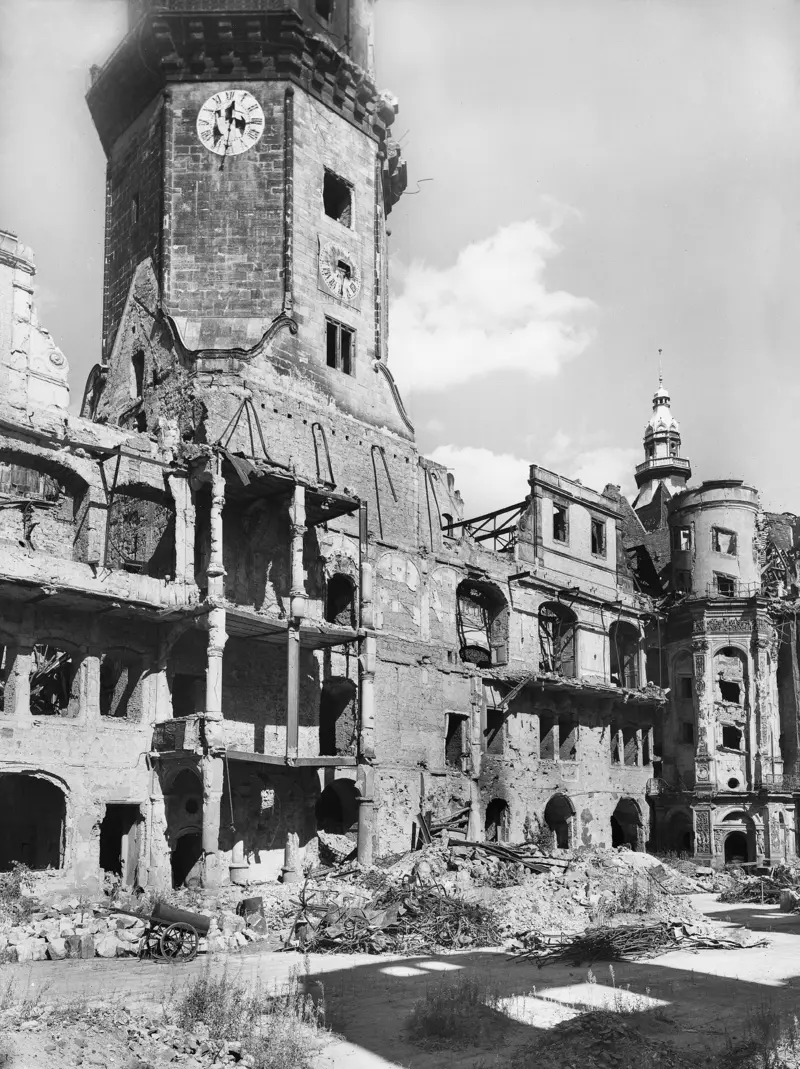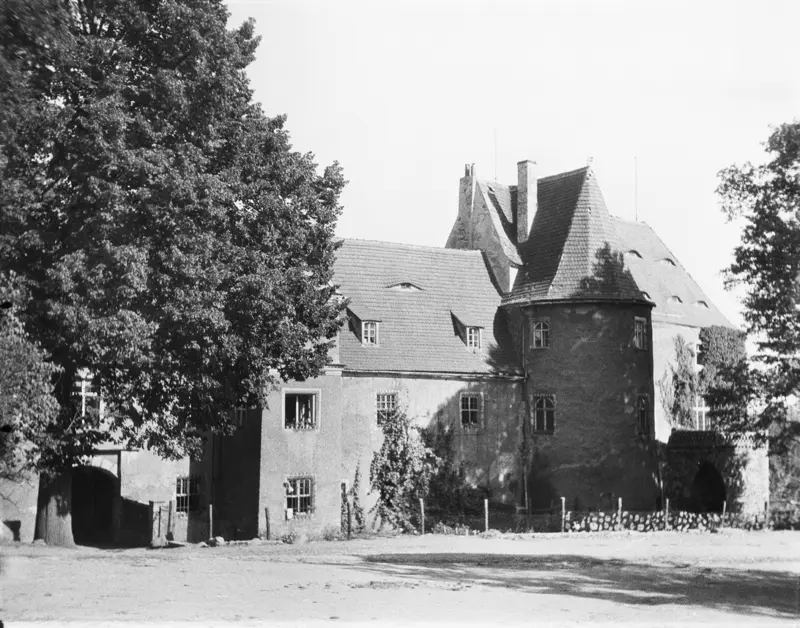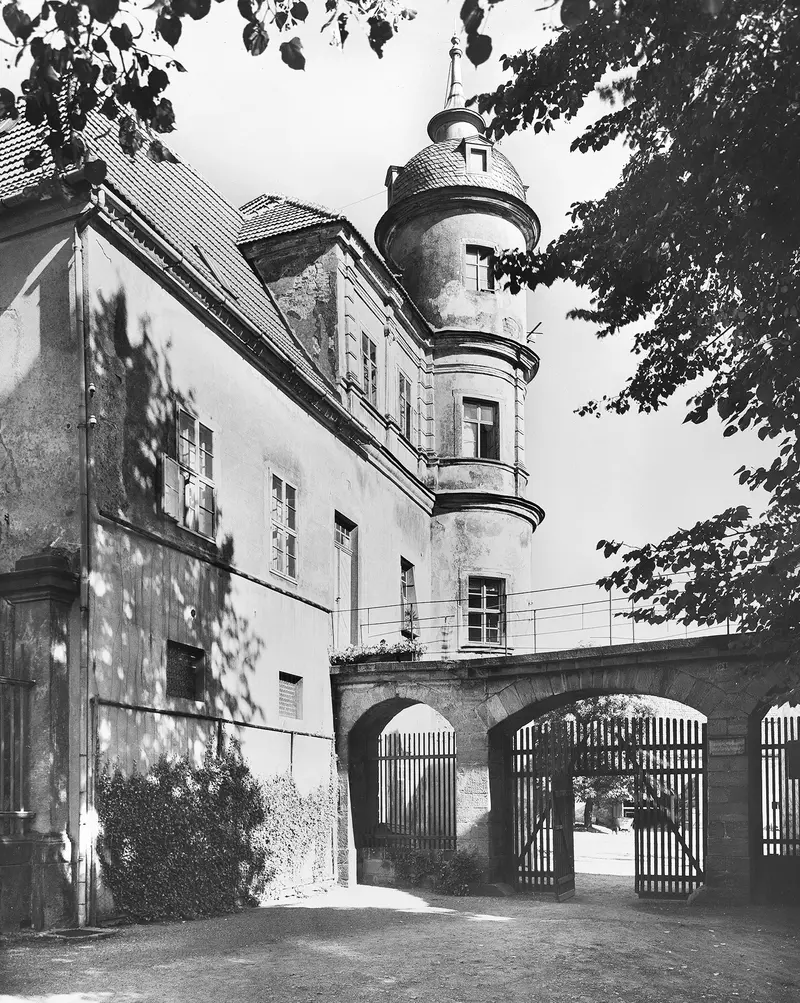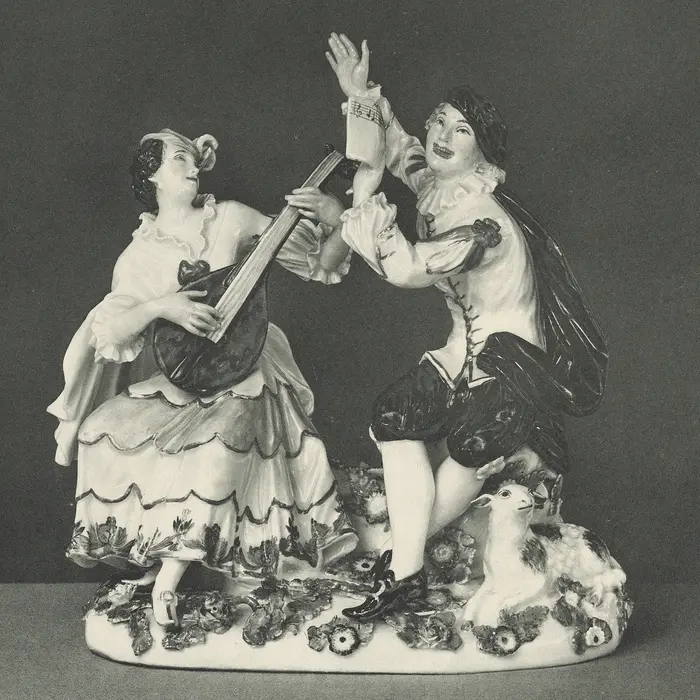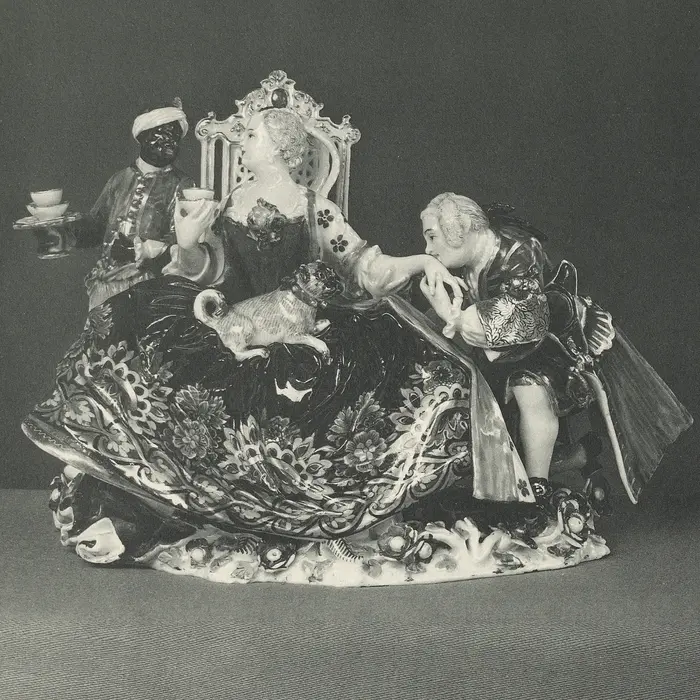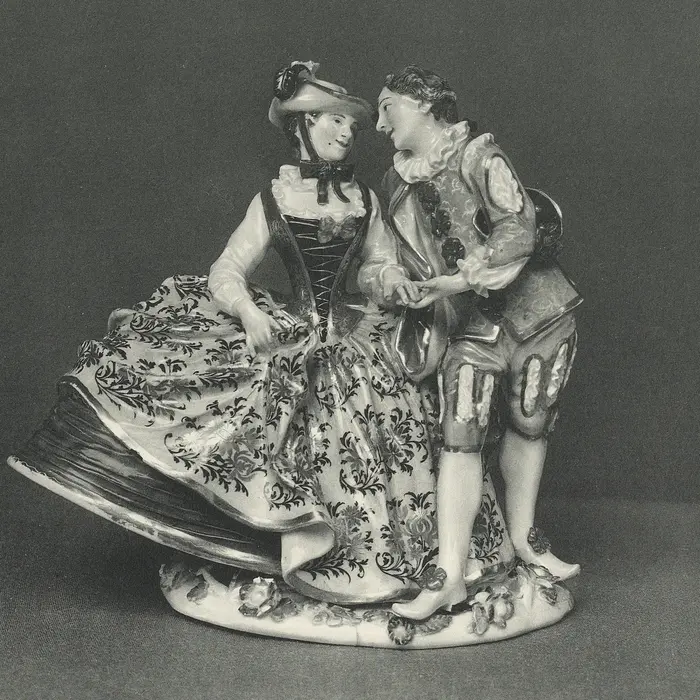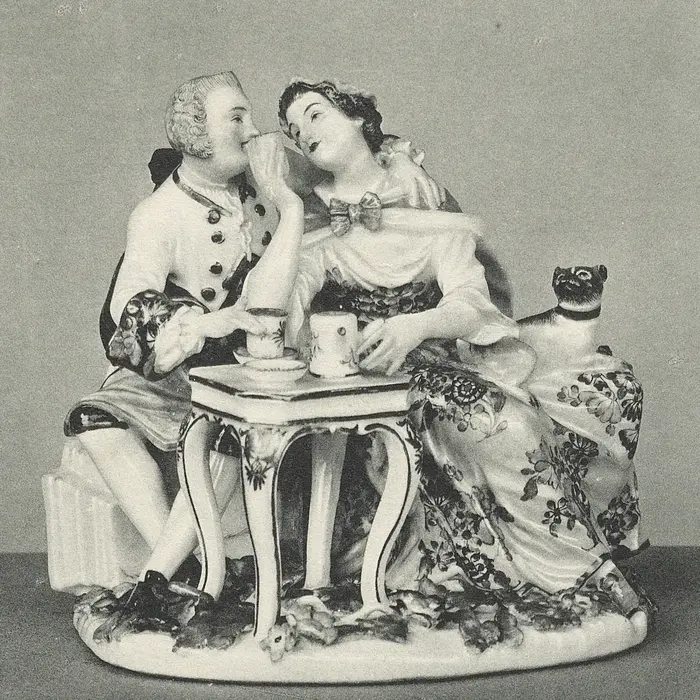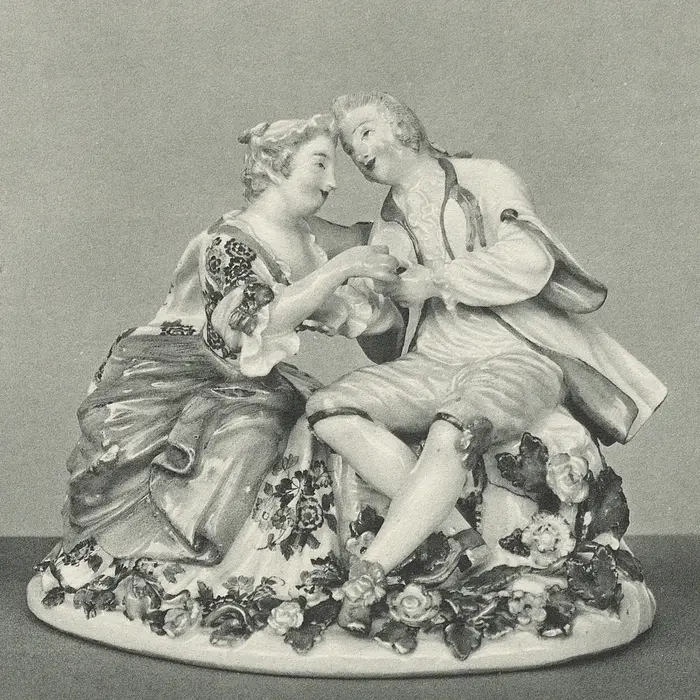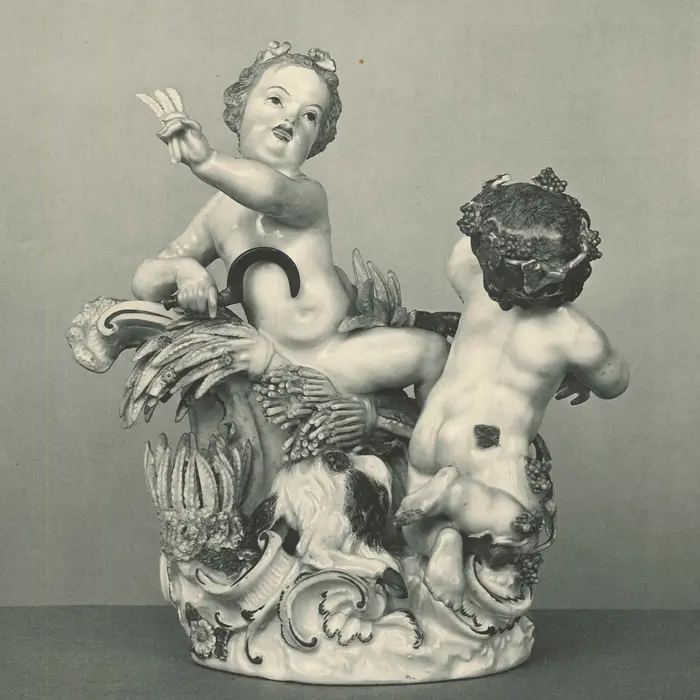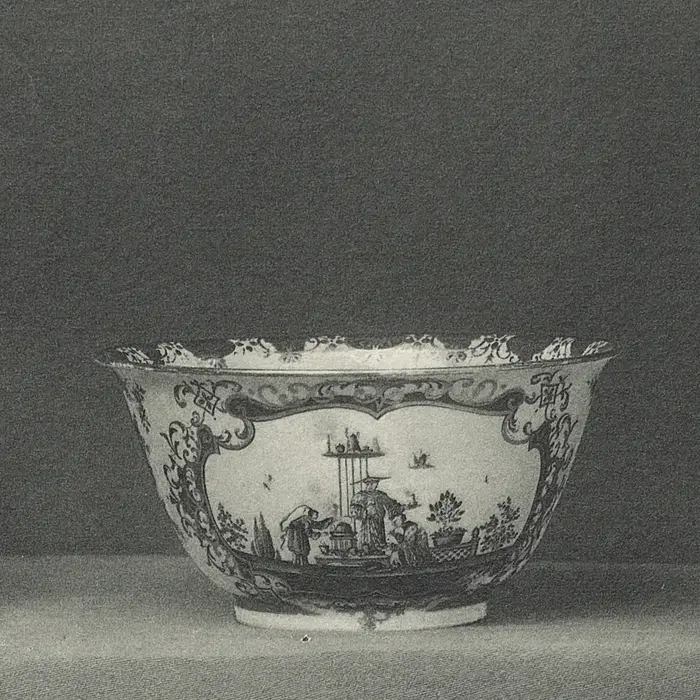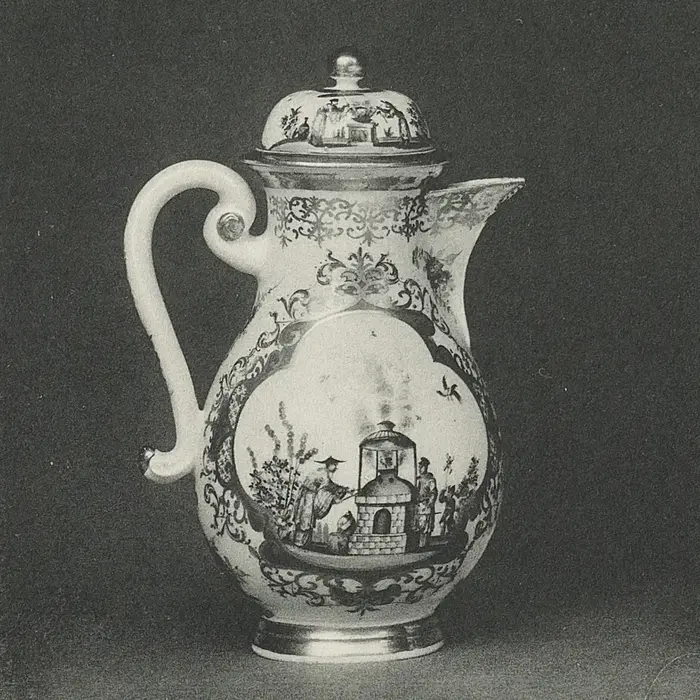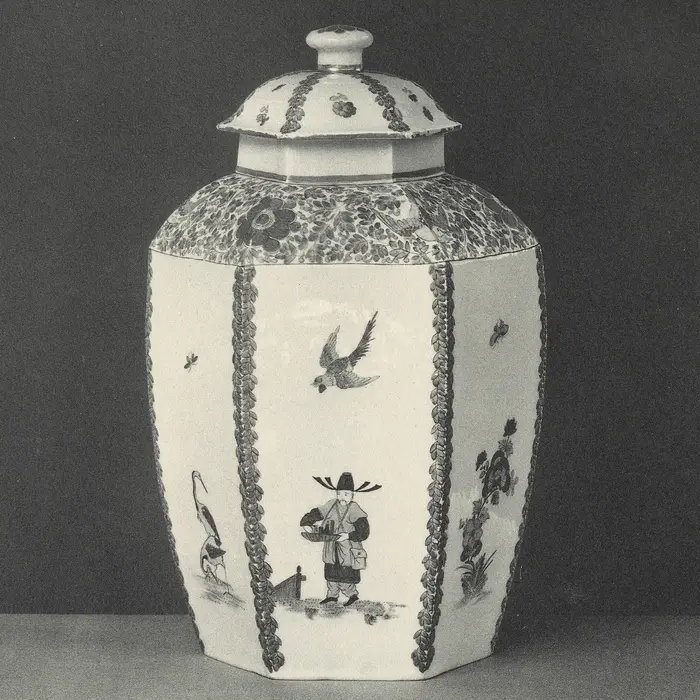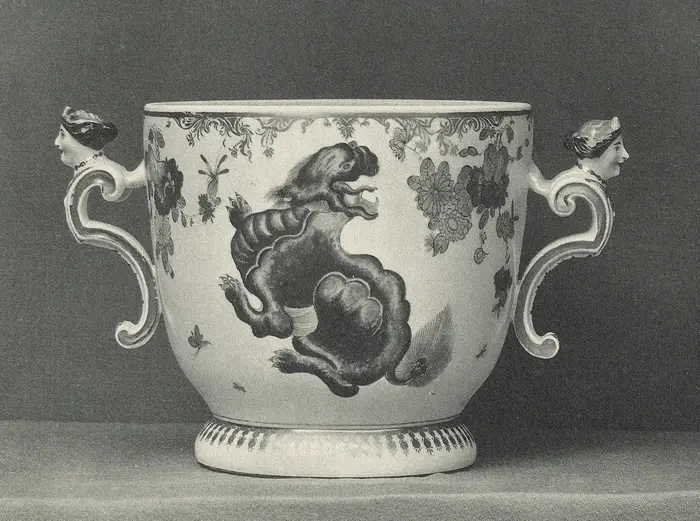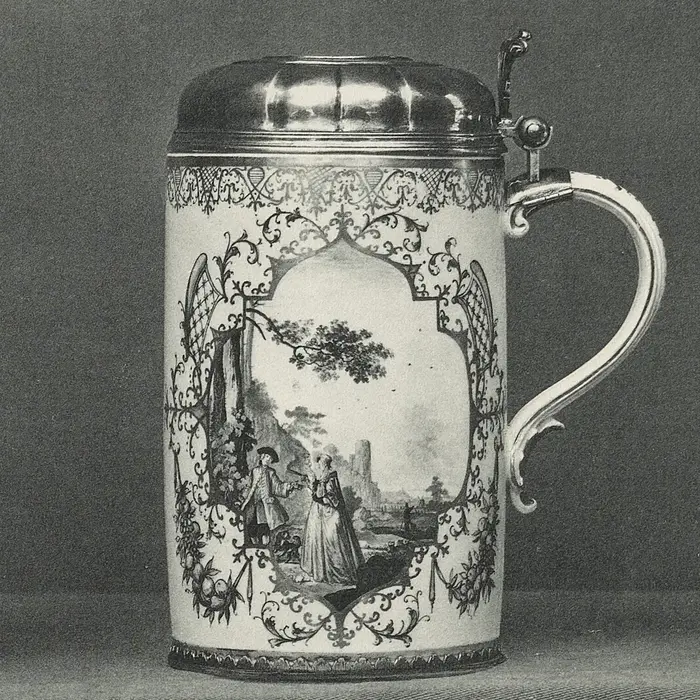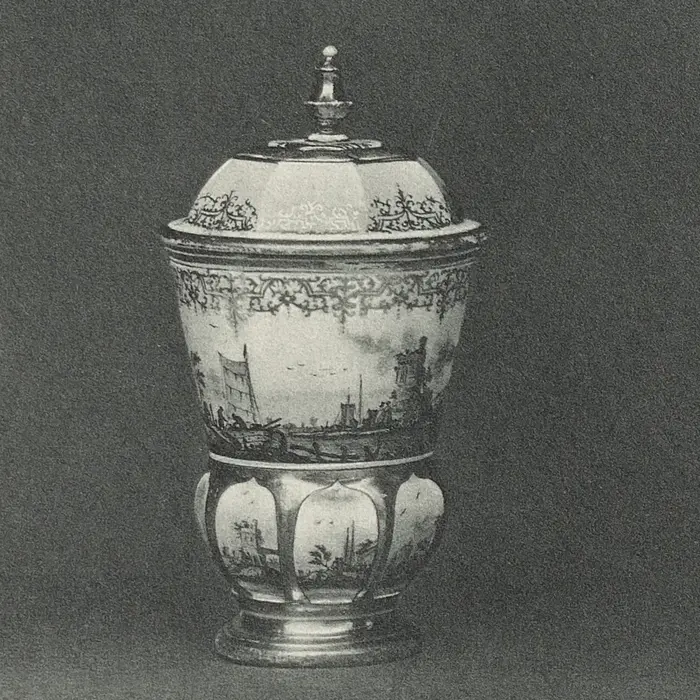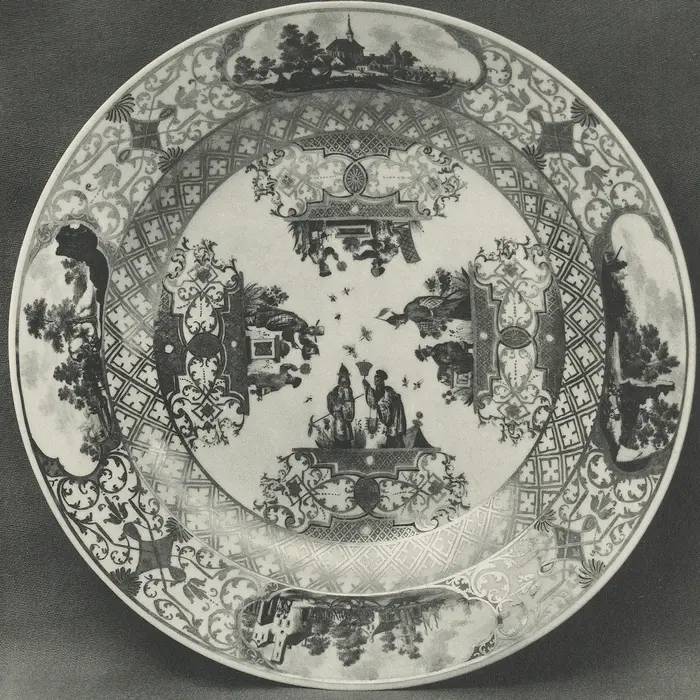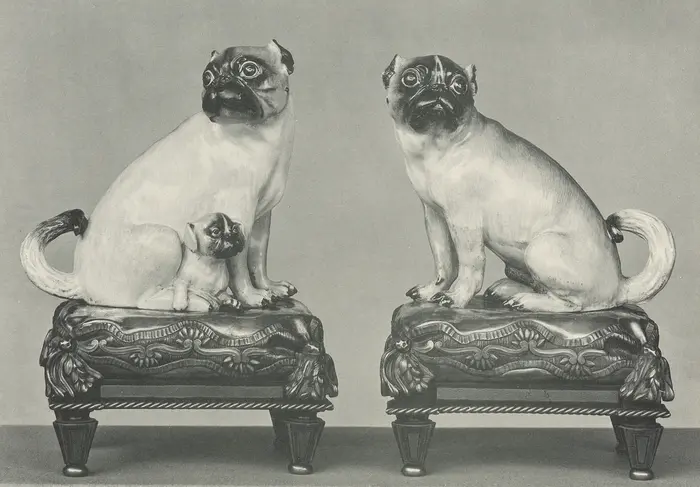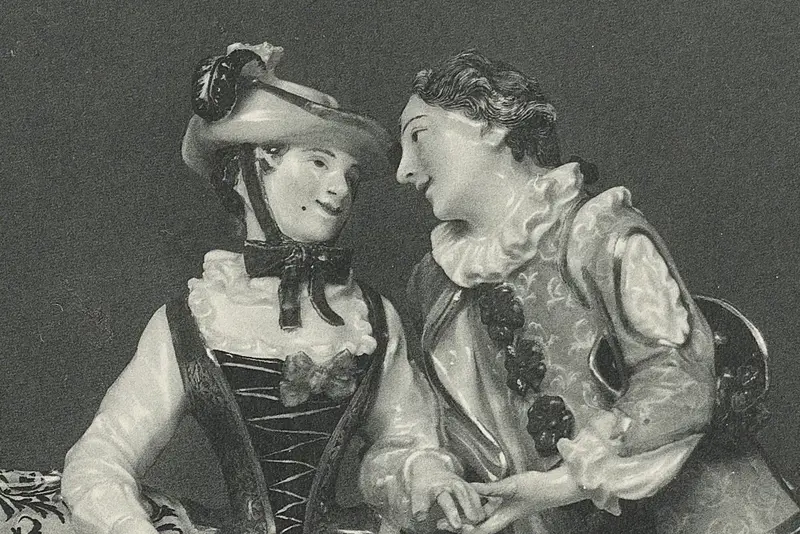Ohne Überschrift
In the course of this second transport, the 24 crates containing the Klemperer Collection were removed from Schloss Rammenau and taken to a number of different storage sites.
On the way to one of the new sites, a lorry carrying a number of crates of porcelain from the Klemperer Collection made an intermediate stop in the courtyard of the Dresden Residence. During the air raids of the night of 13/14 February, the lorry and its entire contents were destroyed.
It was not until 1953 that a number of fragments or shards of individual objects from the Klemperer Collection were recovered from the rubble in the palace courtyard.
